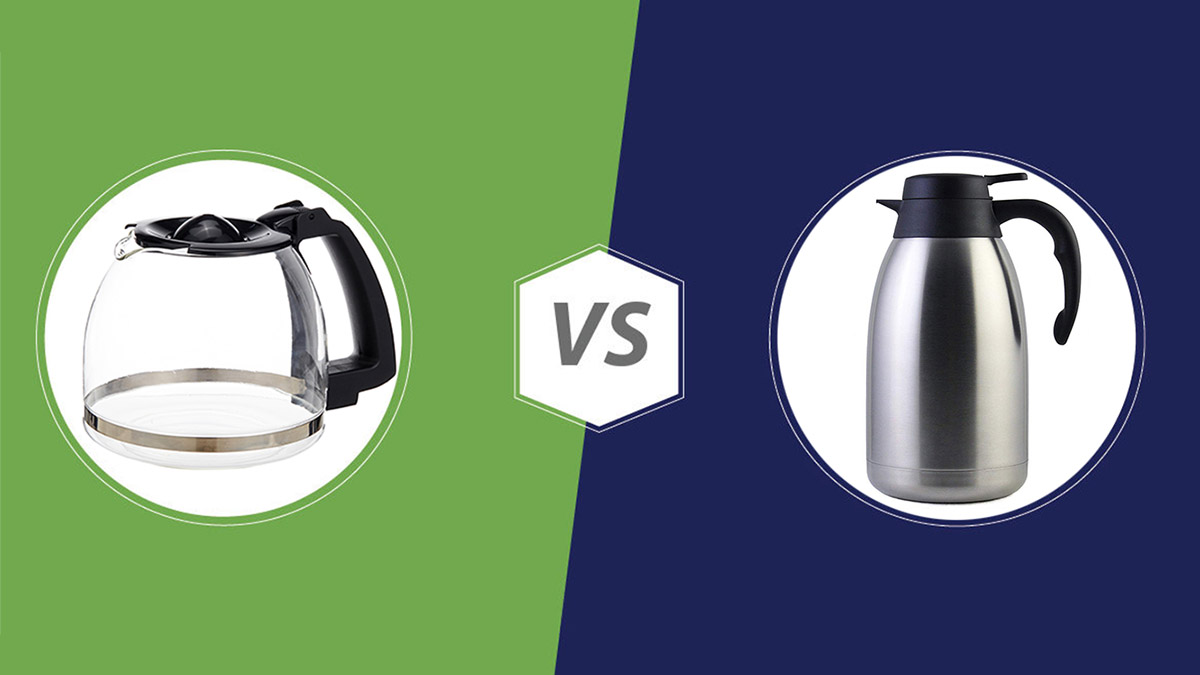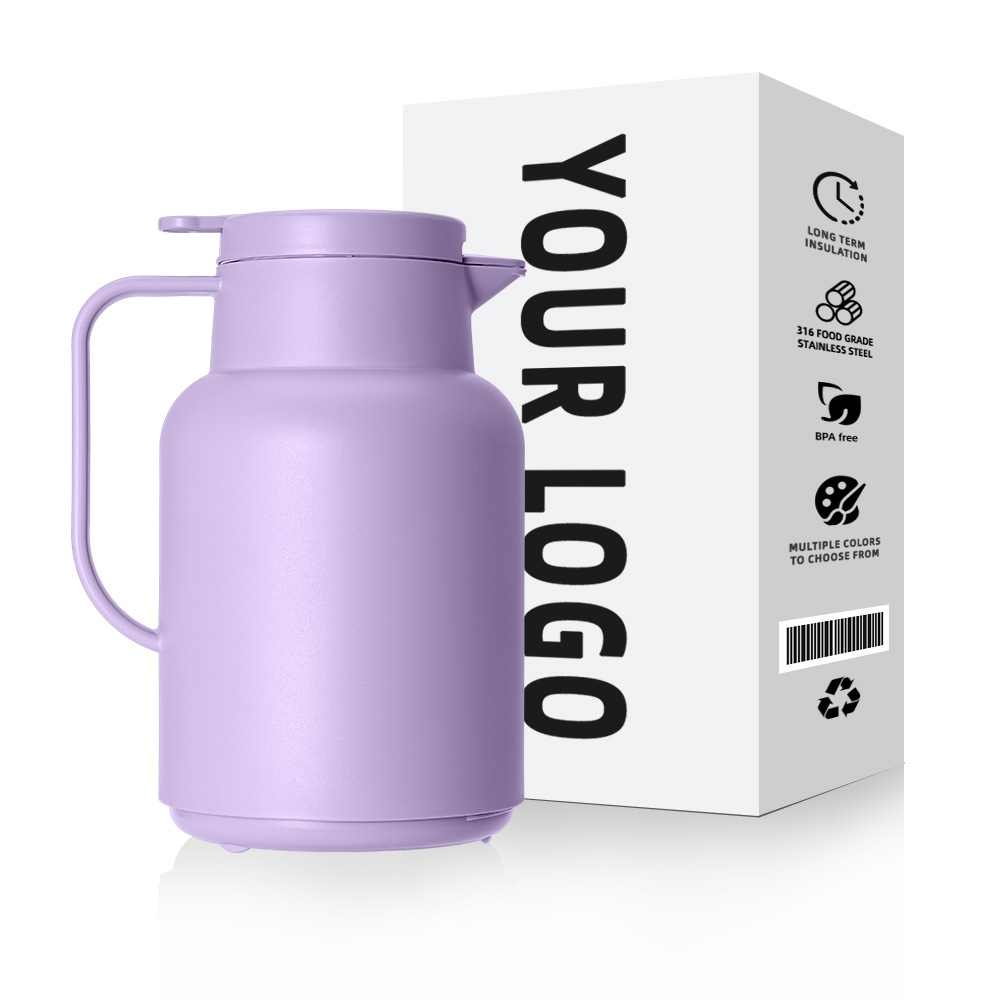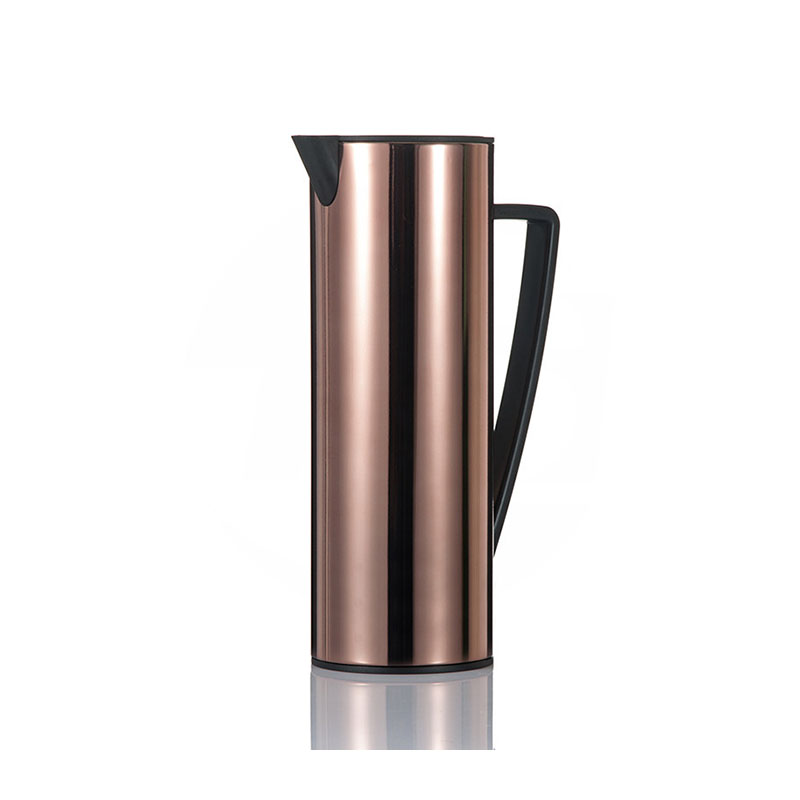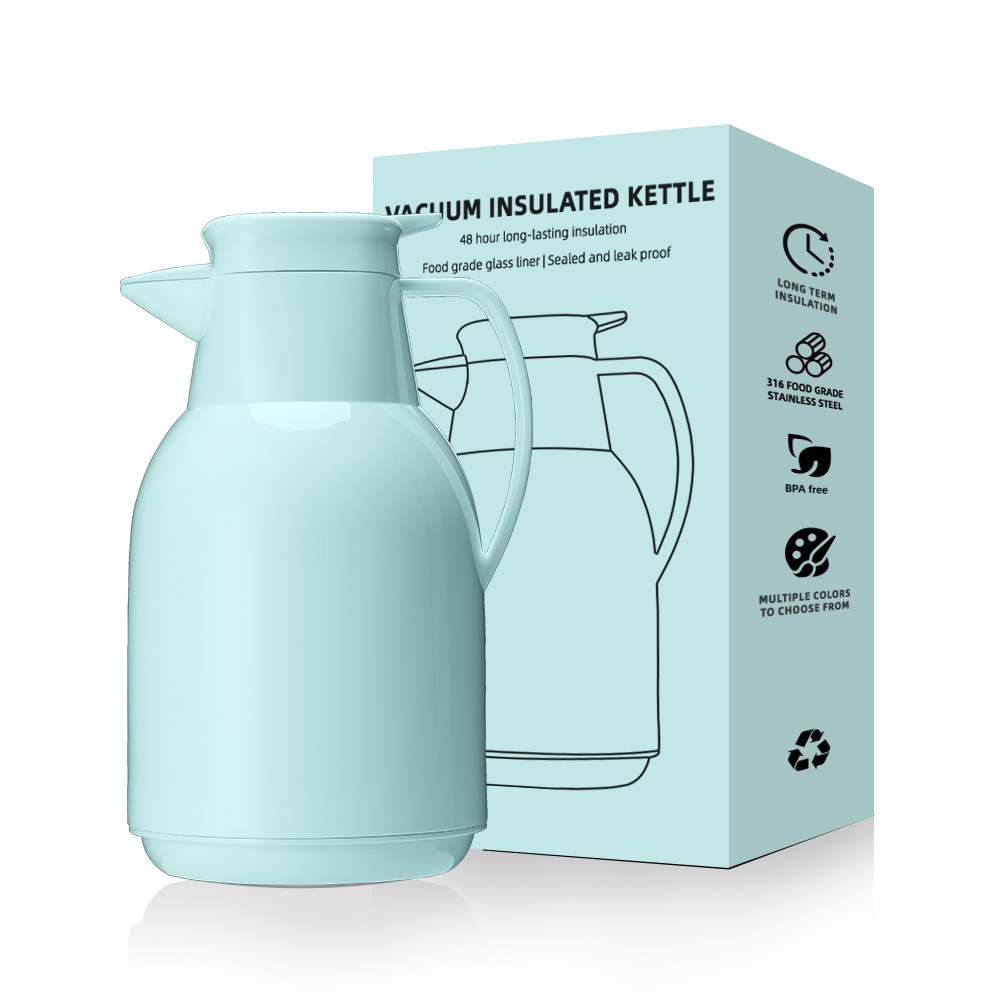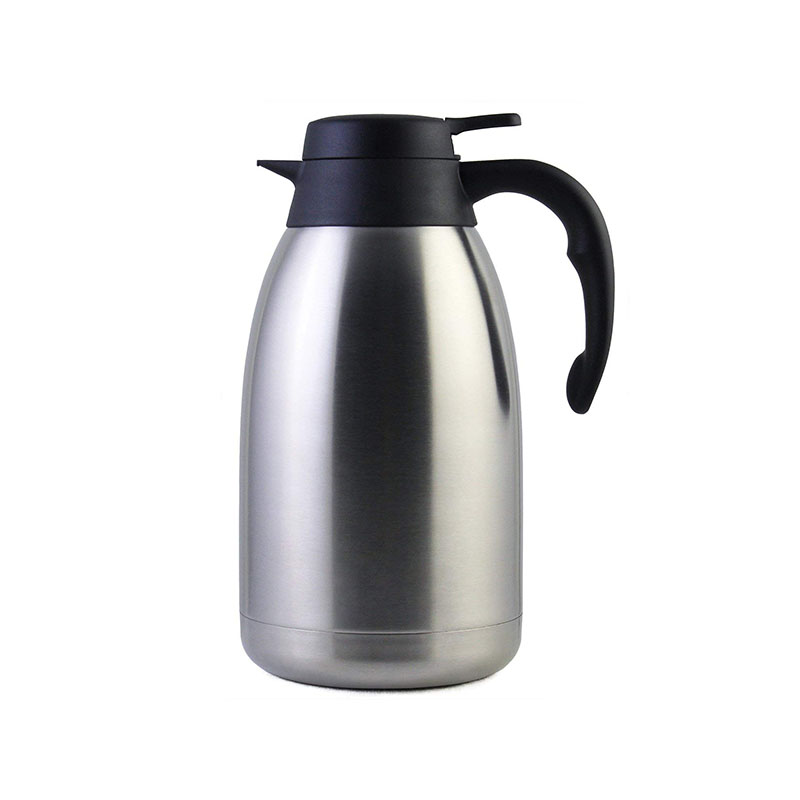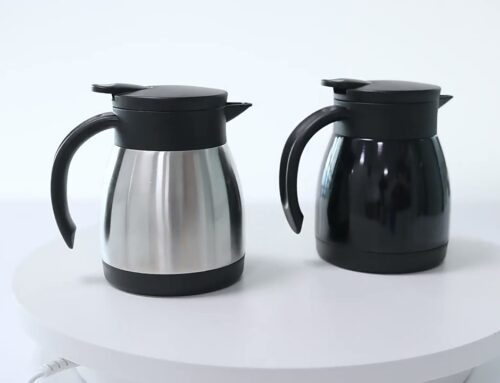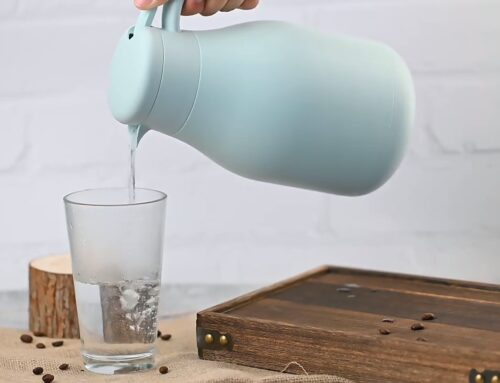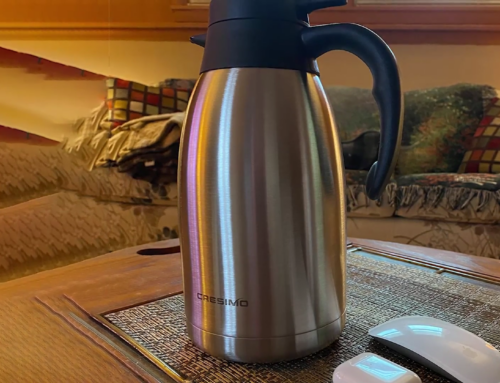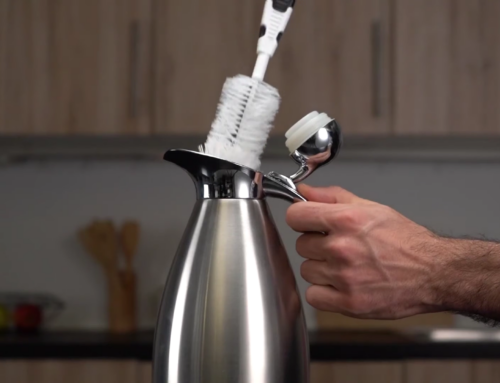As a leading wholesale insulated drinkware manufacturer, KingStar receives emails and phone call every day about the comparison between thermal insulated carafe and glass coffee pt.
For coffee professionals and hospitality businesses, maintaining the ideal serving temperature isn’t just about taste—it’s a financial imperative. A single pot of lukewarm coffee can mean lost customers, wasted product, or negative reviews. This deep dive examines the thermal performance of two popular carafe materials—insulated stainless steel vs. glass—while exploring crucial factors like durability, sustainability, and total cost of ownership.
1. Understanding the Basics: How Each Carafe Works
Before we compare heat retention, it’s helpful to understand the core design of each type of carafe.
Glass Carafes
Glass carafes are most commonly seen paired with traditional drip coffee makers. They’re typically placed on a warming plate that helps keep the brewed coffee hot. The glass itself doesn’t retain much heat; instead, the hot plate below does the heavy lifting.
Pros:
- Affordable: Glass carafes cost less upfront, making them a budget-friendly option.
- Transparency: You can see how much coffee is left at a glance.
- Neutral taste: Glass doesn’t absorb odors or flavors.
- Lightweight: Easier to pour and handle.
Cons:
- Poor insulation: Coffee cools quickly unless kept on a warming plate.
- Fragility: Easily broken with impact or thermal shock.
- Flavor degradation: Coffee left on a hot plate too long becomes bitter.
- Safety concerns: Hot plates can pose burn risks, especially in high-traffic environments.
Insulated Carafes
Insulated carafes—often referred to as thermal carafes—use double-wall vacuum insulation, usually with stainless steel construction. This design traps heat inside without the need for a hot plate or additional power source.
Pros:
- Superior heat retention: Keeps coffee hot for 4–12 hours without reheating.
- No warming plate needed: Coffee stays fresh naturally.
- Durable: Stainless steel is resistant to dents and drops.
- Preserves flavor: No risk of “cooking” the coffee like with warming plates.
- Safer: No external heating source means fewer burn risks.
Cons:
- Higher cost: Initial price is usually higher than glass.
- Heavier: May require two hands to pour, especially when full.
- Opaqueness: You can’t see the coffee level from the outside.
- Cleaning challenges: Some designs have narrow openings.
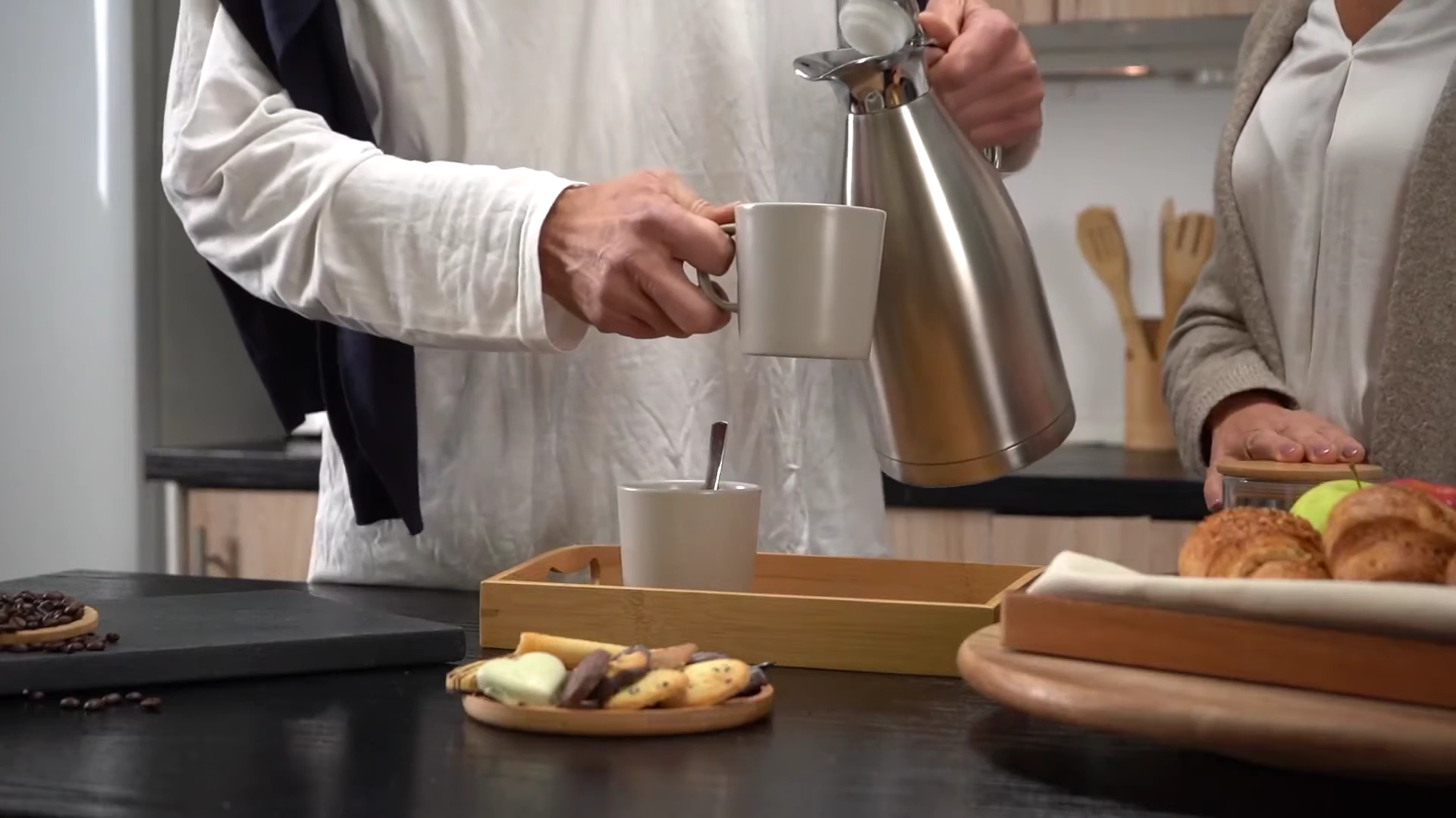
2. Head-to-Head: Heat Retention Comparison
Let’s get straight to the core question: Which carafe keeps coffee hotter for longer?
Glass Carafes:
- Lose significant heat within 30–60 minutes without a hot plate
- Temperature may vary by ±2.5°F with hot plate
- Can result in scorched or stale taste after extended warming
Thermal Carafes:
- Retain heat effectively for 4–6 hours or more
- Lose only about 4°F per hour
- Maintain a more stable internal temperature
Winner: Thermal carafes clearly outperform glass in heat retention, especially for long-term use.
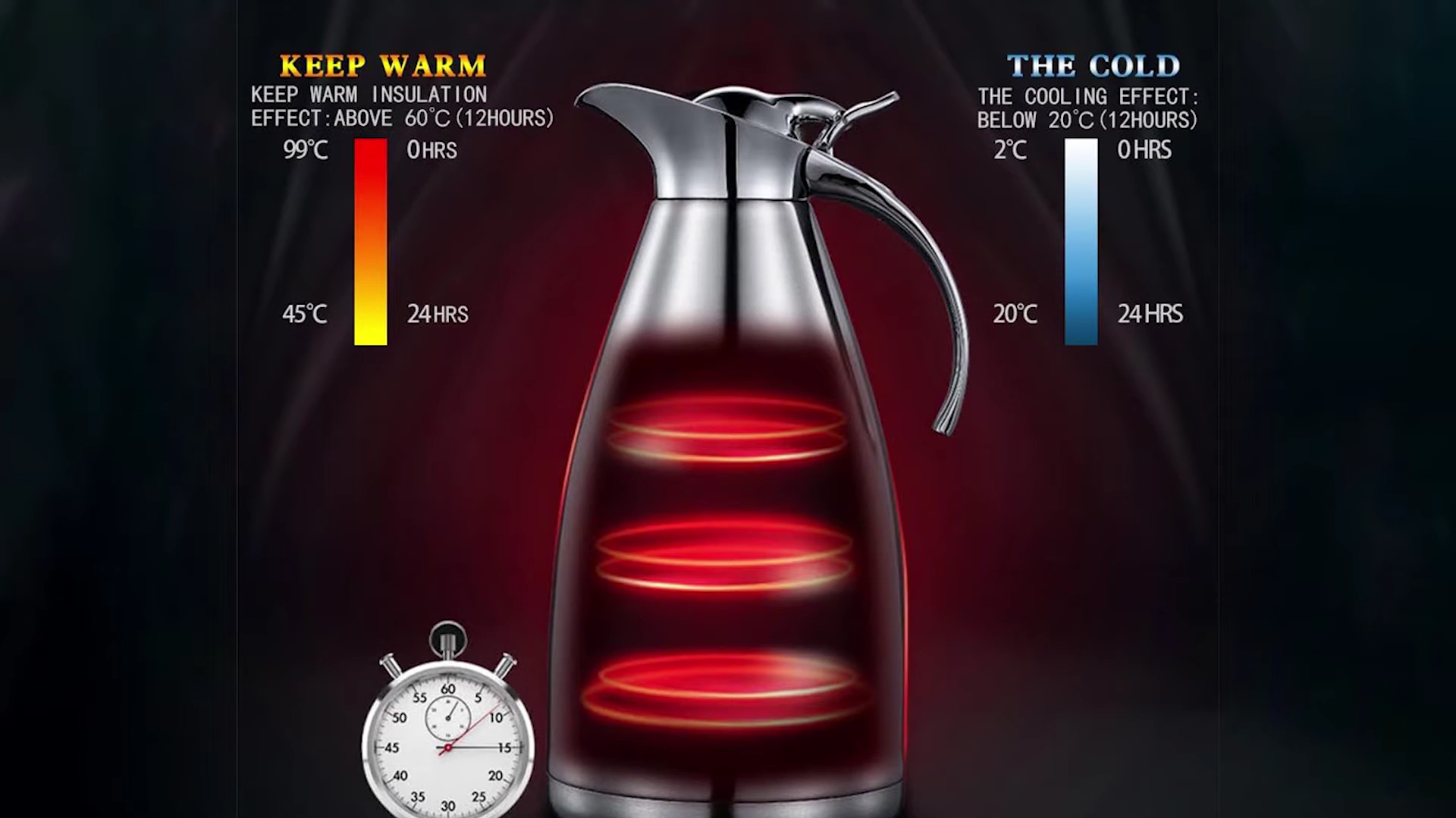
3. Flavor Preservation: It’s Not Just About Heat
Coffee flavor changes as it cools. Here’s how temperature affects taste:
- 70–55°C (158–131°F): Ideal range; maintains roasted, full-bodied notes
- 40–25°C (104–77°F): Sour and acidic notes become more pronounced
The Problem with Warming Plates
Glass carafes on a warming plate tend to “cook” the coffee. This constant exposure to heat can break down the chemical compounds in the coffee, leading to a burnt, bitter taste. If you’ve ever walked into an office and smelled that scorched coffee aroma—yep, that’s the culprit.
Why Insulated Carafes Taste Better Longer
Insulated carafes don’t need a warming plate. They maintain temperature through passive insulation, which means the flavor doesn’t degrade as quickly. Your coffee stays smoother, fresher, and more enjoyable over time.
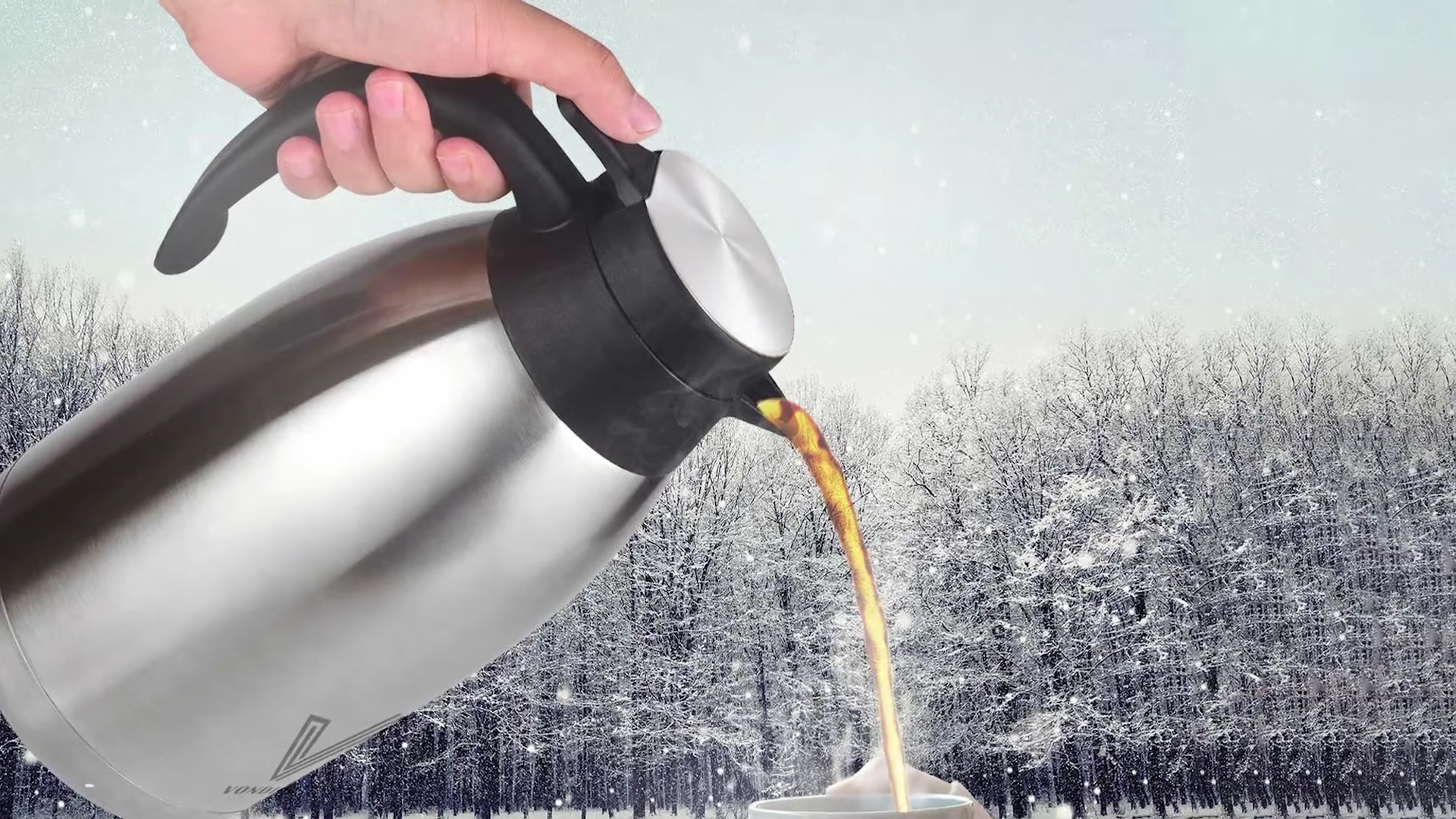
4. Durability and Practicality in Everyday Use
Another major factor in choosing the right carafe is how it fits into your daily routine or business operation.
Fragility vs. Longevity
- Glass carafes are delicate. They can crack or shatter easily, especially during transport or accidental drops. In high-traffic environments like cafes or offices, they often need replacing every few months.
- Insulated carafes, especially those made from stainless steel, are built to last. They resist dents, stains, and odors. That makes them ideal for long-term use in both commercial and home settings.
Maintenance and Cleaning
Glass Carafes:
-
- Easy to clean
- Often dishwasher-safe
- Simple lid mechanisms
Thermal Carafes:
-
- Can be harder to clean (especially narrow necks)
- May require manual cleaning with a bottle brush
- Lid designs vary; some may be tricky to disassemble
For daily use, glass may seem more convenient, but for commercial or high-volume scenarios, thermal carafes provide lasting reliability.

5. Environmental Impact: A Sustainability Angle
If you’re trying to make more eco-conscious choices, the type of carafe you use matters more than you might think.
Glass Carafes
- Often need frequent replacement due to breakage.
- Require electricity for the warming plate—raising energy usage.
- Shorter lifespan leads to more waste.
Insulated Carafes
- Designed to last for years, reducing replacement needs.
- No electricity required to maintain heat—lowering energy use.
- Stainless steel is 100% recyclable and has a smaller carbon footprint over time.
Even in a small office, swapping out glass carafes and hot plates for a single well-made thermal carafe can cut down significantly on power consumption and waste.
6. Cost Considerations
If you’re outfitting a hotel or coffee shop, price always matters. While glass carafes are cheaper up front, they break more easily and need replacing more often. Thermal carafes, while more expensive initially, often last for years without issue.
Think long-term: A one-time investment in a thermal carafe may save money over time, especially in wholesale or hospitality environments.
7. Who Should Choose Which?
Still not sure which one’s best for you? Here’s a quick comparison based on use case.
Choose Glass If You:
- Serve coffee immediately after brewing
- Want something visually appealing
- Are working with a tight budget
- Don’t need long heat retention
Choose Thermal If You:
- Want to keep coffee hot for hours
- Run a café, hotel, or event catering service
- Need a carafe that travels well
- Care about flavor integrity
8. Final Verdict: Which One Keeps Coffee Hotter?
Both glass and insulated carafes have their place. But when it comes to keeping coffee hot, insulated thermal carafes are the clear winner. They retain heat better, preserve flavor longer, and are far more durable—especially for commercial settings.
While glass carafes may be more suited for immediate, casual consumption at home, thermal carafes are the best bet for businesses that value efficiency, safety, and quality.
Conclusion: A Small Change with a Big Impact
At the end of the day, the best carafe for your needs comes down to your coffee-drinking habits, preferences, and priorities. If you’re someone who enjoys sipping coffee slowly over the course of a morning—or you simply want to avoid burnt or stale flavors—a thermal carafe is likely your best bet. Its insulation technology keeps coffee hot for hours without relying on a hot plate, preserving both temperature and taste.
On the other hand, if you value a more traditional presentation, want a lighter, see-through design, or are on a tighter budget, a glass carafe may be the right fit. Just be prepared to drink your coffee sooner or rely on a warming plate.
Whichever option you choose, one thing is certain: the carafe plays a key role in shaping your daily coffee experience.
At KingStar, we specialize in manufacturing high-quality, customizable insulated coffee carafes designed for wholesalers, suppliers, and retailers worldwide. If you’re looking to offer your customers durable, stylish, and effective thermal solutions, we’re here to help.
Contact us at sales@waterbottle.tech to learn more about our OEM/ODM services and flexible wholesale options.

